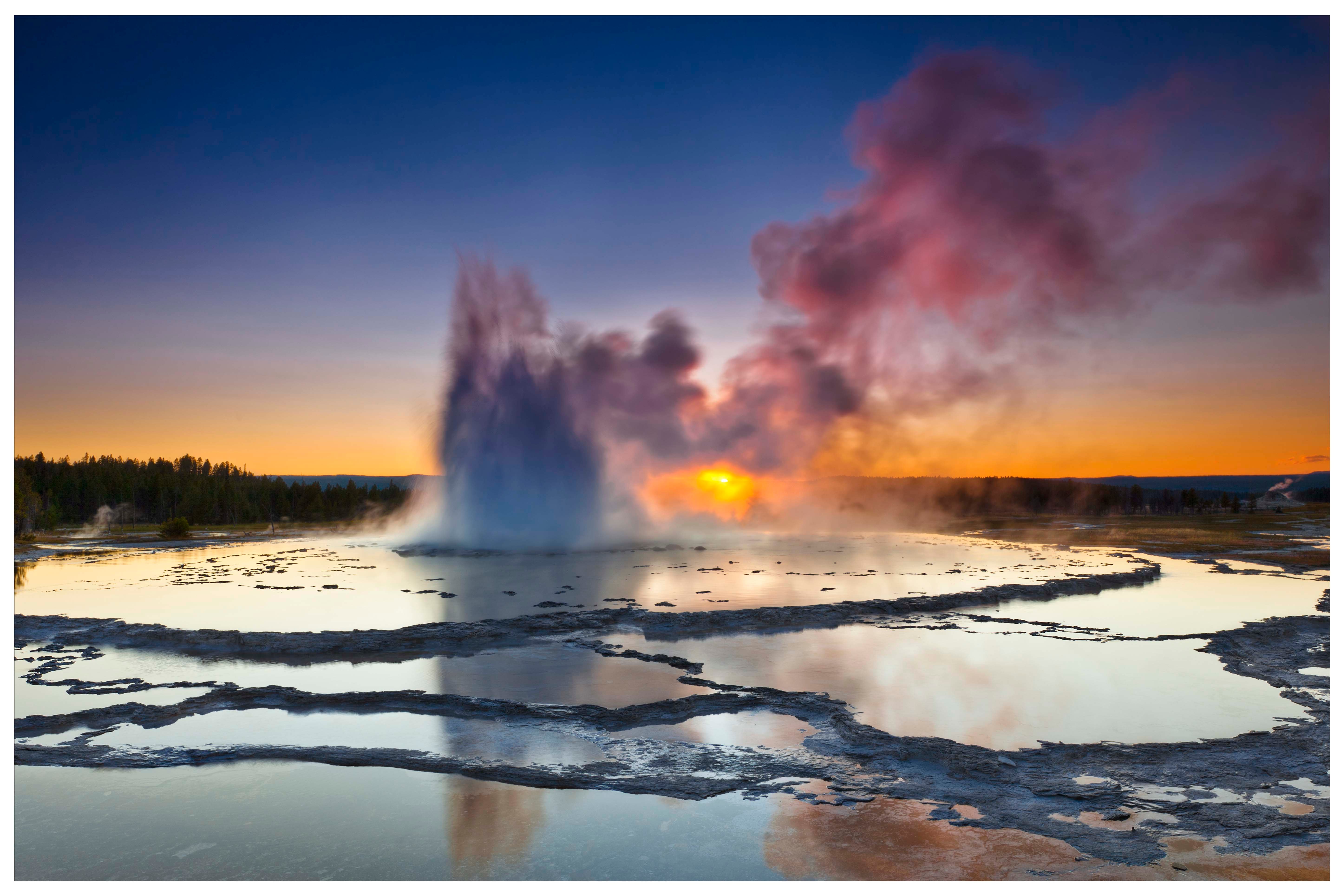Yellowstone Insider: 10 Not-to-Miss Sites in Yellowstone this Summer!

Yellowstone is so vast, you could spend weeks exploring. For those on a tighter timeline, there are a few sights not to be missed, but also some lesser known, off-the-beaten-path areas that are well worth seeing. We’ve selected a few that span different aspects of the park, each unique and all awe-inspiring.
Grand Canyon of the Yellowstone
The Yellowstone River, the longest undammed river in the United States, is the force which created this massive canyon, measuring between 800’-1200’ deep and 1500’-4000’ wide. Orange, yellow and red canyon walls make this the subject of many artists. The South Rim Trail is an easy trail which takes you to views of both the upper and lower falls.
Inspiration Point
Along the canyon, sits Inspiration Point, an area that juts out from the rest of the canyon wall to panoramic views up and down the canyon. The point offers just a small view of the falls but is a sight to behold. You can hike to the area along the North Rim Trail, or you can start at the parking lot and take a short flight of stairs down to the viewing area. Keep in mind, it’s less than a tenth of a mile round trip but has fifty feet of elevation change.
Hayden Valley
This wide open valley is a great place to sit and scan the hillsides with your binoculars to spot all kids of wildlife. Watch for bison, grizzly bears, elk, wolves, coyotes, deer and more. There are a handful of roadside pullouts where you can park and enjoy the afternoon sunshine or a picnic on your way from Yellowstone Lake to the Canyon Village.
Old Faithful Visitor Information Center
This isn’t your usual Visitor Information Center, so don’t pass it by. The center is full of exhibits, including education about the hydrothermal features and the underground volcano that Yellowstone sits on. Both kids and adults will love the Young Scientist Exhibit Room with hands-on activities. You’ll also find ranger-led programs, and of course, souvenirs!
Beehive Geyser
While crowds flock to Old Faithful, the nearby Beehive Geyser is taller, shoots a minute longer, and you can get a little closer. Watch for the indicator geyser, which shoots a bit above the cone (look for a rock formation.) The geyser usually erupts between 2 and 20 minutes after the indicator.
Yellowstone Lake
At an elevation of 7,733’, Yellowstone Lake is the largest high elevation lake in North America. Coming in at 20 miles long and 14 miles wide, the lake is best enjoyed by boat. The water stays around 41 degrees, definitely not for swimming. While you’re there, enjoy lunch or a beverage at the historic Lake Hotel. Interestingly, although the lake itself stays cold, the base of the lake has geysers, hot springs, and deep canyons. A small submersible robot found a canyon 390’ deep and rock spires 20-feet tall. The hottest spring, found at Mary Bay, has a temperature of 252 degrees.
Grand Prismatic Spring
The granddaddy of hot springs, Grand Prismatic Spring has crazy, bright colors: orange, yellow and green, surrounded by deep blue. The third largest spring in the world, it is deeper than a 10-story building. Park at the Fairy Falls Trailhead and take the Grand Prismatic Overlook Trail to the viewing area, a 1.2 miles out and back trail.
Mammoth Hot Springs Terraces
Imagine stumbling upon these white travertine terraces of hot water 200 years ago before Yellowstone became a National Park. These iconic formations are a site to see and one of our favorites to hit in the early morning as the sun peaks over the mountains. On a chilly morning, steam rolls over the top of the hot water as it evaporates into the mountain air. We recommend taking the boardwalk through the hot springs to see the terraces from all angles.
Petrified Tree
In the Tower/Roosevelt Junction area, there was once a giant forest of redwood trees. Today, one lone, petrified tree, tens of millions of years old stands prominently. During one of the major volcanic eruptions mudflow filled the pores of the tree, preserving it in detail. However, glacial ice, running water and wind have uncovered more of the vast area of petrified trees, some of which you can see with optical aids from the base of Specimen Ridge. The attraction is 1/4 mile off the Grand Loop Road. (Trailers and RV’s are not allowed due to the small turnaround area.)
Lamar Valley and Lamar Buffalo Ranch
The Lamar Valley, which spans as far as you can see is the most wildlife-dense area with bison, black bears, bighorn sheep, elk, grizzly bears, mule deer, pronghorn, and wolves. Wildlife watching is best in the very early morning and just before dusk when it’s cool and animals are eating. The Lamar Buffalo Ranch is on the National Register of Historic Places. In 1901, only 25 bison remained in the park. Congress appropriated $15,000 to augment the herd and purchased 21 more bison. The ranch's bison were fed and bred and then released into the wild, where today, thousands of bison roam.
Interested in seeing more? Check out these 10 Amazing Instagram Photos of Yellowstone National Park in the Summer!
In our never-ending quest to keep up with all things new in Bozeman, we have been producing content for years and can't possibly update every blog when new businesses open or existing businesses close. Please reference the publish date and do your own due diligence when making plans.

